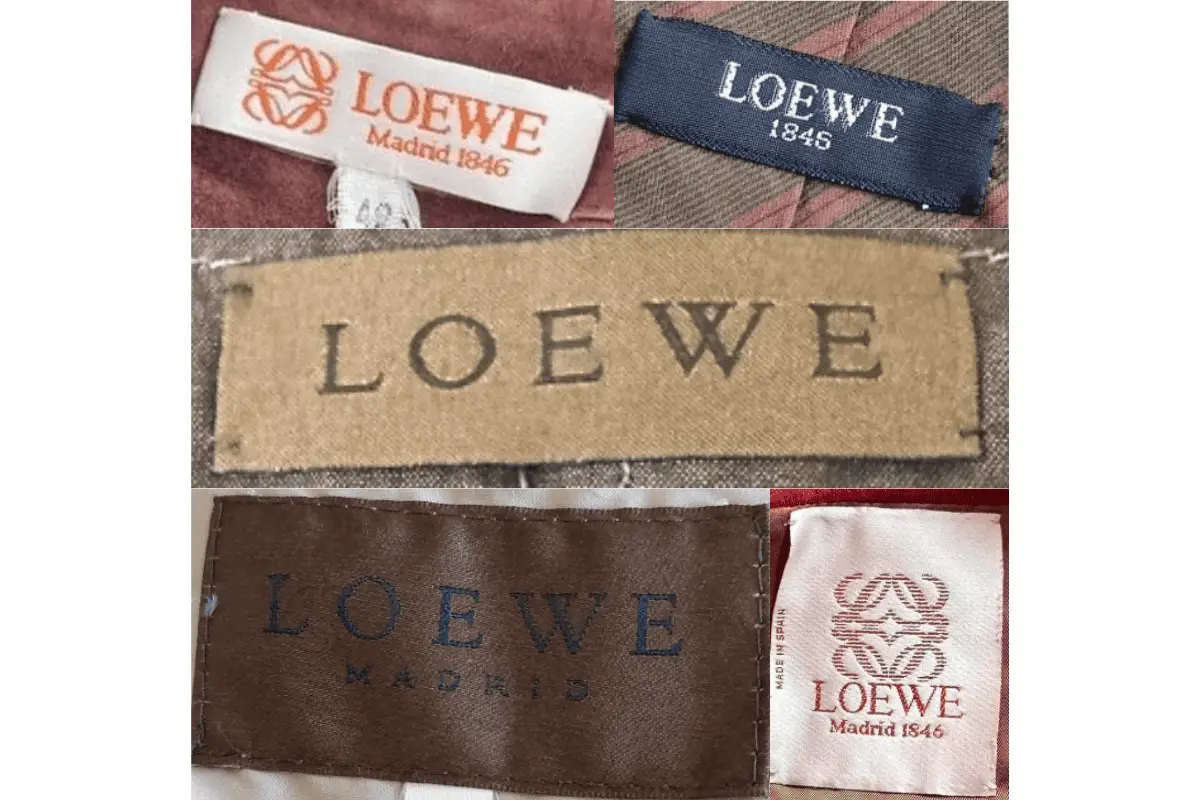Loewe, a prestigious Spanish brand, traces its origins back to 1846 when a group of skilled leather craftsmen in Madrid laid its foundation. The brand as we know it today was officially born in 1876 when Enrique Loewe, a German merchant, joined the group, marking the beginning of a legacy that seamlessly blended Spanish craftsmanship with German precision. By the early 20th century, Loewe had garnered the admiration of prominent figures, including Queen Victoria Eugenie and King Alfonso XIII, who granted the brand the Royal Warrant of Appointment in 1905. This royal endorsement solidified Loewe’s reputation as a purveyor of luxury, setting the stage for its international acclaim.
The mid to late 20th century saw Loewe expanding its horizons beyond leather goods into perfumes and fashion. The creation of the Loewe anagram logo by Spanish painter Vicente Vela in the 1970s marked a significant milestone, symbolizing the brand’s innovative spirit. Renowned designers like Giorgio Armani and Laura Biagiotti contributed to Loewe’s womenswear collections, further enhancing its fashion credentials. In 1986, the brand caught the eye of LVMH, the global luxury conglomerate, which first acquired distribution rights and later, in 1996, full ownership. This acquisition paved the way for a new era of creative directors, each bringing their unique vision to the brand while honoring its rich heritage.
Under the stewardship of Jonathan Anderson, who became creative director in 2013, Loewe has continued to evolve, balancing contemporary aesthetics with timeless elegance. Anderson’s tenure has been marked by high-profile collaborations, innovative ad campaigns, and a renewed focus on Loewe’s core strengths—exquisite leather goods and impeccable craftsmanship. The brand’s relocation of its design headquarters to Paris while maintaining its manufacturing roots in Spain underscores its dual commitment to tradition and modernity. Today, Loewe stands as a testament to enduring luxury, its storied past interwoven with a vibrant present, and an exciting future shaped by creative ingenuity and artistic excellence.
Iconic 90s Loewe TV Commercial
How to tell if Loewe is vintage from the logo
Loewe, a luxury Spanish brand known for its fine leather goods and sophisticated design, has evolved its logo significantly over the years. The changes in Loewe’s logo reflect its growth and adaptation to modern aesthetics while maintaining a connection to its rich heritage. Identifying vintage Loewe pieces through their logos can be an insightful way to date them and understand the brand’s history.
1846 to 2014 Loewe logo
- The original Loewe logo was quite traditional, featuring classic serif typography.
- The design was simple yet elegant, fitting the brand’s high-end and timeless appeal.
- This logo remained in use for a long period, symbolizing the brand’s consistency and commitment to quality.

1846 to 2014 Loewe logo
2014 to now Loewe logo
- The current Loewe logo introduced in 2014 features a modern, minimalistic emblem along with the brand name in a refined serif font.
- The emblem is an intricate, symmetrical design that adds a contemporary touch while still being sophisticated.
- The text is slimmer and more spaced out, giving the logo a more airy and elegant appearance.

2014 to now Loewe logo
How to tell if Loewe is vintage from the tags
The evolution of Loewe tags reflects the brand’s storied history and its continuous innovation. From the early classic designs to more modern and diversified layouts, Loewe tags offer insights into the brand’s journey through the decades. Here’s how to identify vintage Loewe tags from different eras.
Struggling to identify vintage tags or labels? Submit a picture on our vintage tag identification page, and we’ll help you out!
1970s vintage Loewe tags
- Simple, minimalistic design with bold “LOEWE” lettering.
- Tags often feature “Made in Spain” indicating the origin.
- Classic black and white color schemes used.

1970s Loewe tags
1980s vintage Loewe tags
- Introduction of the Loewe emblem alongside the brand name.
- Tags may include “Madrid 1846” reflecting the brand’s heritage.
- Use of different background colors and materials for tags, such as brown and white fabrics.

1980s Loewe tags
1990s vintage Loewe tags
- Tags feature “LOEWE” with “1846” prominently displayed.
- More varied use of colors and materials, including blue and brown tags.
- Some tags include detailed manufacturing information and addresses.

1990s Loewe tags
2000s vintage Loewe tags
- Modernization of tag designs with a continued emphasis on the Loewe emblem.
- Tags often include both “LOEWE” and “Madrid 1846” in various layouts.
- Greater use of branding elements and logos, with tags in a variety of colors and textures.

2000s Loewe tags


